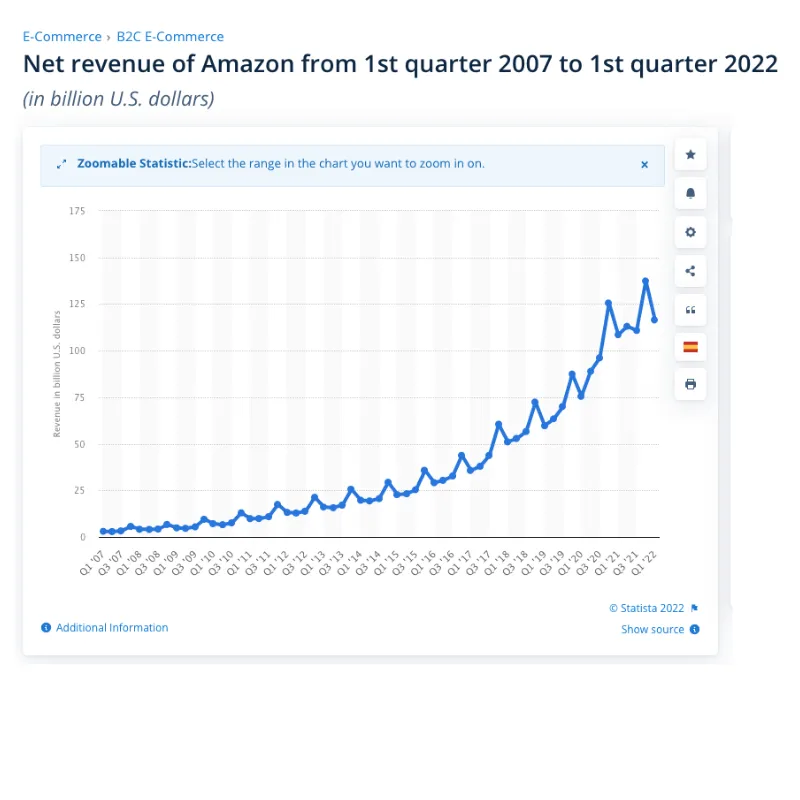How Analytics Can Help You Increase Your Revenue

Check out OLake, our latest open source offering for replicating databases to lakehouses.
The volume of data generated every day is increasing exponentially. Businesses are more aware than ever that they need not only to store this data but also analyze it.
Blogs, comments, articles, etc., help understand your customers, competitors, and business market. Data analytics enables the interpretation of information for making decisions that scale businesses.
Data analytics enables a business to make efficient and automated decisions. It promotes innovation and eases the collection of critical customer insights.
Data analytics helps to make better judgments by mining vast amounts of unstructured data such as media, emails, and messages. All this information processed by data analytics helps the company to increase revenue.
How to use data analytics for revenue growth
Data analytics enables leaders to make informed decisions and steer their firms along the right path. It reveals patterns in raw data that show how well the firm is functioning. Using this information, businesses can mark the areas for improvement.
A well-designed sales analytics plan enhances your revenue and profit margins. Your sales team can make smarter evaluations using the information gathered.
Here are some ways in which data analytics can help increase business revenue:
Finding the appropriate market segment
A company must understand its customers, no matter if it operates in a B2B or B2C environment. Creating appropriate products for specific market segments and keeping a good insight into these segmentations are key to product success. Data analytics allows a company to see consumers' wants and shape its marketing efforts. This way, it can generate more revenue from different segments.
Analyzing and identifying business strengths and weaknesses
Today's business owners and managers are aware that they face enormous problems. Their ability to estimate, plan and respond to changes in the business environment determines their success. They must recognize their strengths and shortcomings to keep up with the changes.
Data analytics can assist firms in conducting a thorough examination of their operations. Its findings show areas with scope for improvement in performance and processes.
Aligning analytics with financial objectives
Company leaders should align analytics with financial objectives to make digital marketing successful. This way, they can measure ROI easily and find ways to improve it. Predictive analytics is helpful for the lifetime-value study of different customers.
It makes marketing operations more efficient and improves the understanding of the KPIs.
Examining the trends of client behavior on digital properties
Identifying clients' purchasing habits is important. It lets businesses tailor their products and services to meet expectations. The key to this is data collection that feeds its input through channels such as surveys, sales, and subscriptions.
Continuous evolution and data expansion reveals indicative patterns. Using internal search, businesses can present information on their websites per customer needs. Churn analysis tells when customers are likely to leave. Execution strategies aid in retention at that point.
Creating demanded personalization for the client
Mass personalization means customizing a product or service for each customer. Big data supports the personalization of digital experiences for customer segments.
It can deepen connections between consumers and companies. It can also increase brand loyalty and guarantee continuous revenue streams.
Analytics of customer sentiment
Product managers should focus on their digital sites along with third-party channels. Social media can be vital in developing client attitudes toward businesses. Observing these external channels can tell about customers' sentiments.
It helps review the brand reputation and address consumer grievances. It also reveals traits that may be harming a brand. With this information, businesses can target specific concerns and strengthen clients' trust.
The "All for one" Approach
If a company is expanding, it must keep its sales and marketing teams in sync. About 95% of "world-class" sales leaders follow this practice.
By working together, these teams make the organization customer-centric and scale its revenue. Any clash between sales and marketing teams negatively impacts revenue and customer engagement.
Here is an example of Amazon. It is an enterprise that makes comprehensive and methodical use of information. Q4 2021 was its most successful quarter, with net sales of $138.41 billion. This is typical for Amazon during the holiday season.
What's impressive is that the company continued to grow in the next quarter. In Q1 2022, it reported $116.44 in net sales, which is still the highest Q1 on record.
Ways to align marketing and other business departments
-
Reorganize the customer journey.
-
Create an agreed-upon target consumer persona.
-
Use a "marketing first" strategy.
-
Determine the common key performance indicators.
-
Collect sales feedback and client voice data.
-
Match messages throughout the campaign
-
Make marketing-driven sales assets.
-
Collaborate on post-sale, retention, and growth.
How a unified data platform helps in Data Democratisation across the organisation?
Conclusion
The future of data analytics is exciting, and the possibilities are endless. The popularity of data analysis is growing, and so is the need to learn it. Data analytics can increase revenue by identifying new customers and measuring marketing success.
It also contributes to reducing loss and theft. With this technology, organizations can process data and work faster.
Companies can use analytics to process the ever-changing and growing data. They can use the insights to form effective policies for the future. The ultimate benefit of data analysis for businesses shows is in the form of revenue growth.
